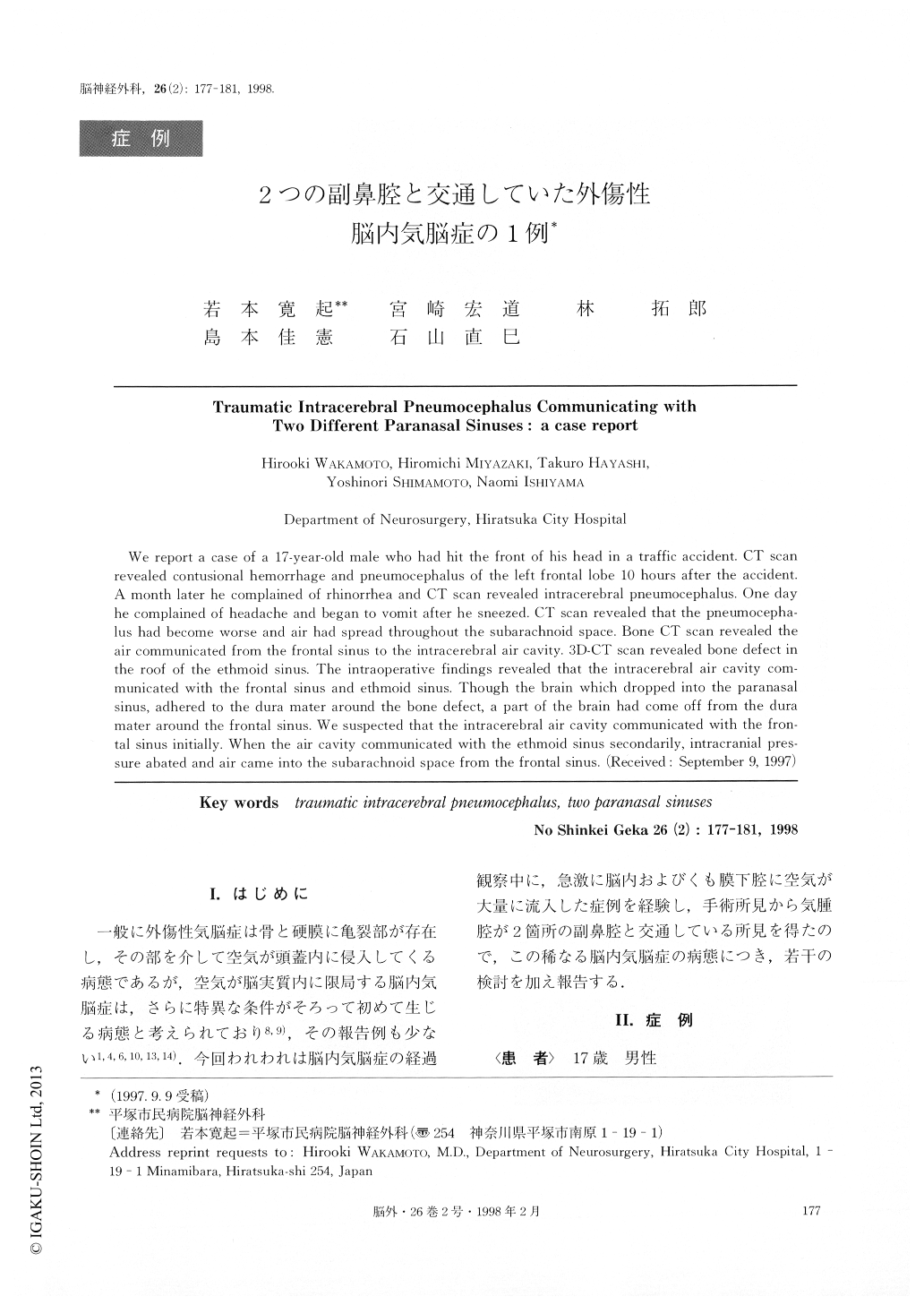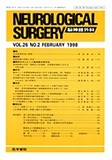Japanese
English
- 有料閲覧
- Abstract 文献概要
- 1ページ目 Look Inside
I.はじめに
一般に外傷性気脳症は骨と硬膜に亀裂部が存在し,その部を介して空気が頭蓋内に侵入してくる病態であるが,空気が脳実質内に限局する脳内気脳症は,さらに特異な条件がそろって初めて生じる病態と考えられており8,9),その報告例も少ない1,4,6,10,13,14).今回われわれは脳内気脳症の経過観察中に,急激に脳内およびくも膜下腔に空気が大量に流入した症例を経験し,手術所見から気腫腔が2箇所の副鼻腔と交通している所見を得たので,この稀なる脳内気脳症の病態につき,若干の検討を加え報告する.
We report a case of a 17-year-old male who had hit the front of his head in a traffic accident. CT scanrevealed contusional hemorrhage and pneumocephalus of the left frontal lobe 10 hours after the accident.A month later he complained of rhinorrhea and CT scan revealed intracerebral pneumocephalus. One dayhe complained of headache and began to vomit after he sneezed. CT scan revealed that the pneumocepha-lus had become worse and air had spread throughout the subarachnoid space. Bone CT scan revealed theair communicated from the frontal sinus to the intracerebral air cavity. 3D-CT scan revealed bone defect inthe roof of the ethmoid sinus. The intraoperative findings revealed that the intracerebral air cavity com-municated with the frontal sinus and ethmoid sinus. Though the brain which dropped into the paranasalsinus, adhered to the clura mater around the bone defect, a part of the brain had come off from the duramater around the frontal sinus. We suspected that the intracerebral air cavity communicated with the fron-tal sinus initially. When the air cavity communicated with the ethmoid sinus secondarily, intracranial pres-sure abated and air came into the subarachnoicl space from the frontal sinus.

Copyright © 1998, Igaku-Shoin Ltd. All rights reserved.


